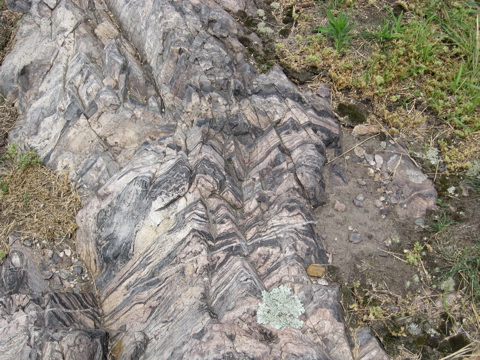Teacher Notes in Yellow
Marblehead Lighthouse - teacher guide

This "Field Trip" and the others in Marblehead highlights the fact that, while the Boston area is very geologically inactive at present, this was not always the case. For much of its history, the Boston area was next to tremendous and violent geologic activity. These rocks formed in the late Precambrian - probably between 550 and 570 million years ago. This was a period of time when many volcanoes were found in our area.
This site and the others in Marblehead are good places to discuss the different types of volcanic rocks. The rocks below are extrusive rocks. These rocks, and the ones at Castle Rock , formed on the surface of the earth. The rocks here formed from volcanic ash and lava. By contrast, the rocks at Devereaux Beach formed deep below the surface of the earth - probably thousands of feet down. Yet, how is it possible that all of these rocks appear, currently, exposed at the same altitude? Discuss how uplift, erosion, faulting can alter landscapes to make this possible.
We suggest looking at this "field trip" in conjuction with other volcanic sites. You may want to have your students look at Nantasket Beach and Dane Park at the same time.
All of the pictures below show a type of igneous rock called rhyolite. You've probably learned that one way to tell igneous rocks apart from sedimentary or metamorphic rocks is that igneous rocks don't show layering... but these do! Can you explain how an igneous rock could form such distinct layers?
Now, to challenge your thinking even further, if you look closely at the rocks you will notice that the layers are vertical! How is this possible?



